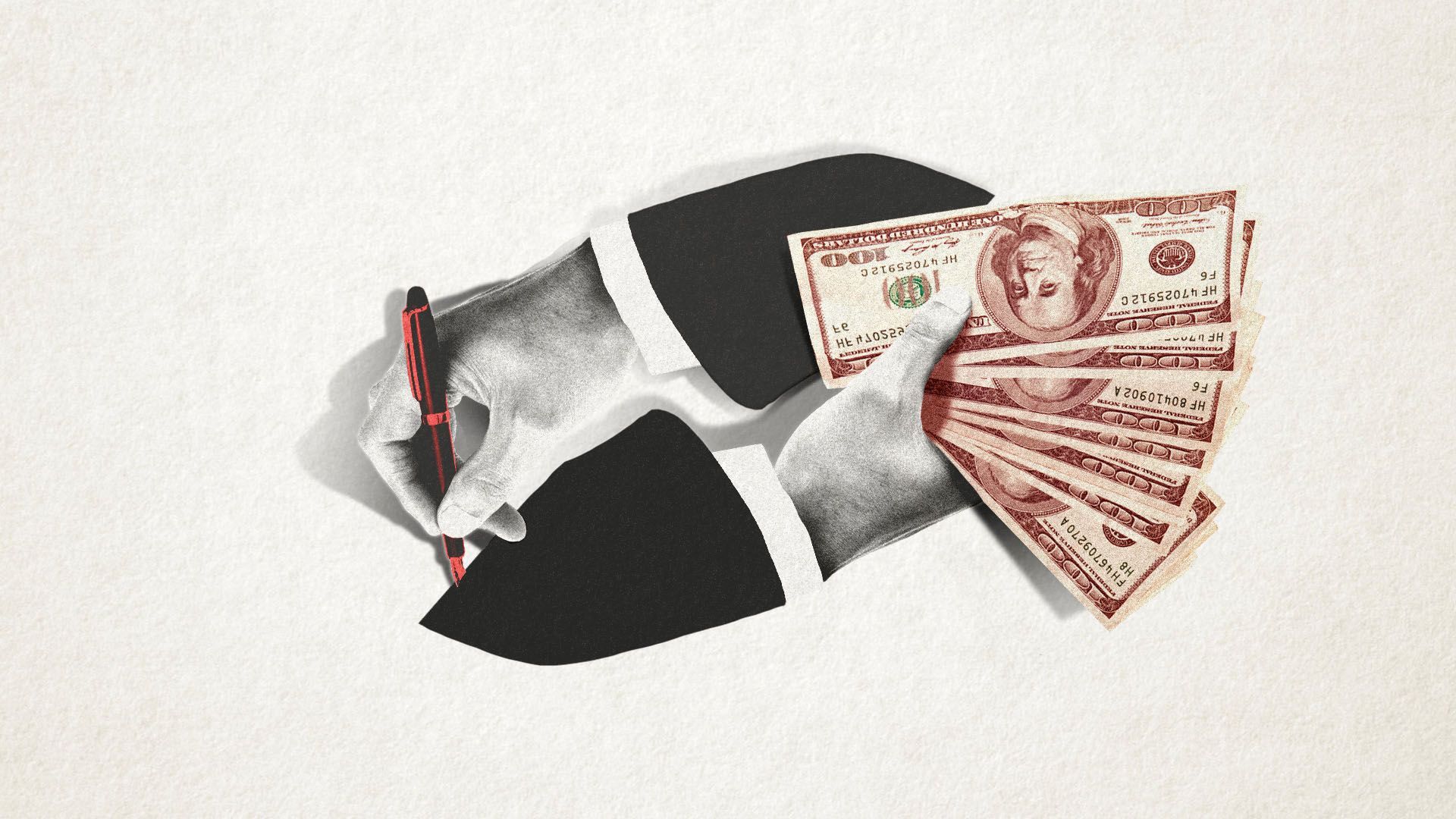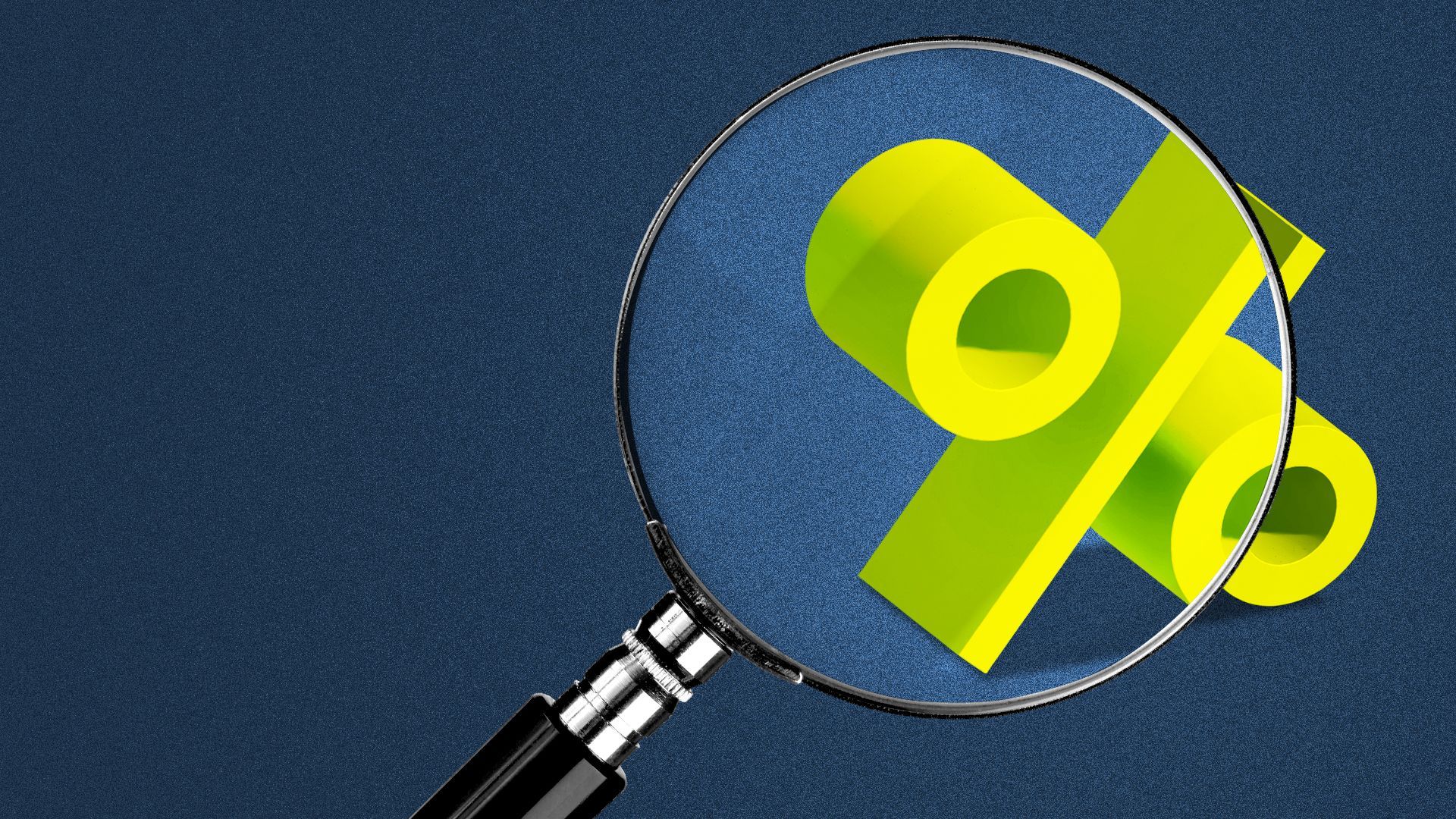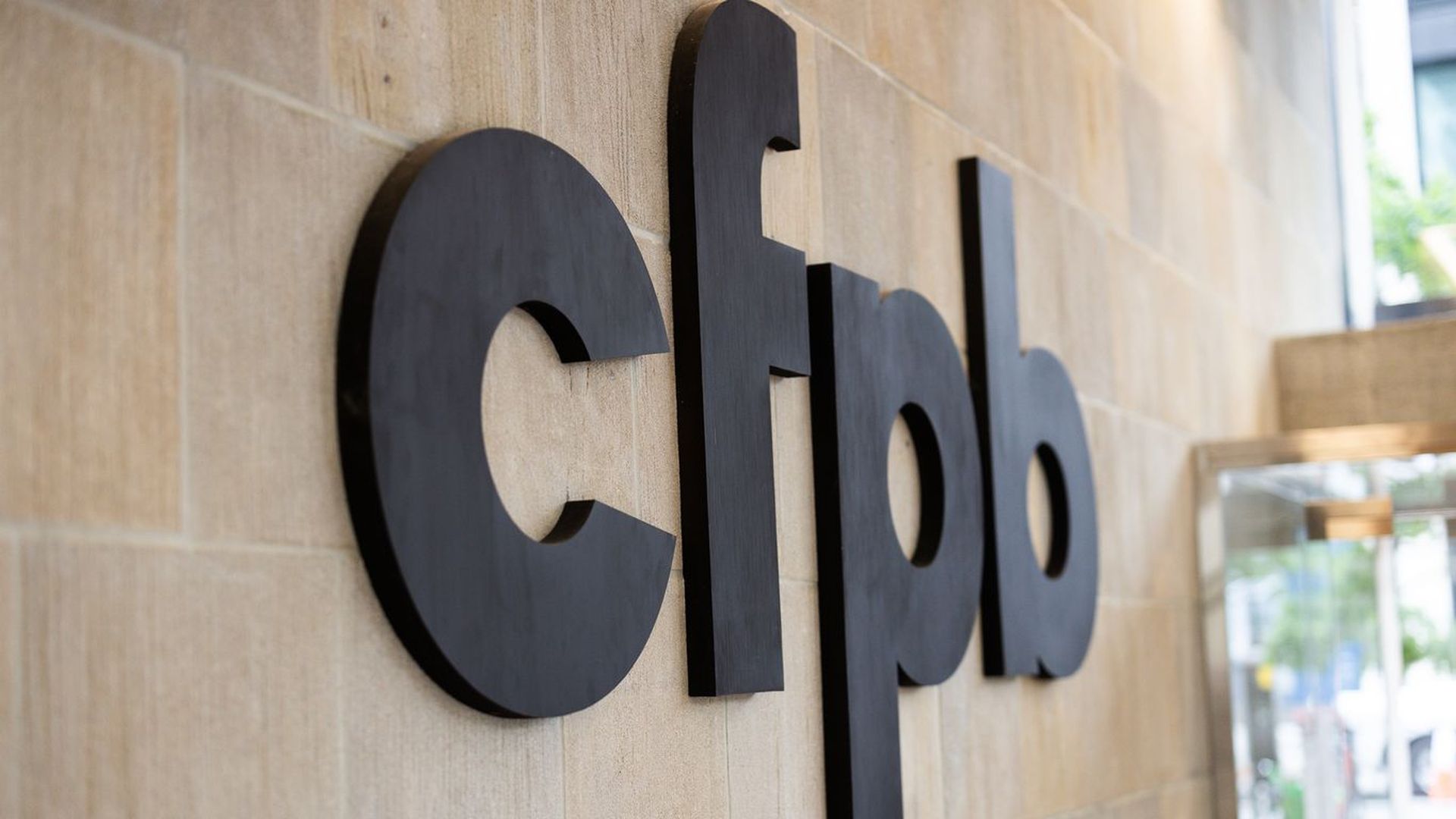May 17, 2024
😅 Phew. We made it to Friday, and to celebrate we have a poll for you! Read on to learn what it's about. Today's newsletter is 1,199 words, 5 minutes.
1 big thing: The mystery of DAF fees

Illustration: Sarah Grillo/Axios
Charitable funds are paying for-profit financial advisers millions of dollars in advisory fees — and the IRS wants to crack down on those agreements.
Why it matters: One of the big secrets in the world of philanthropy is how much money flows back to donors' financial advisers after being given away to charity.
The big picture: For financial advisers, it can be bittersweet when their clients give money or assets away to charity.
- On the one hand, the client gets a big tax write-off — but on the other hand, they no longer pay their financial adviser for managing those assets.
Yes, but: When the charity in question is a donor-advised fund, or DAF, the advisers often get to keep on being paid (by the DAF) for managing the money.
- DAFs allow Americans to take charitable tax deductions before deciding where they want the money to end up.
- DAFs don't spend the donated money, they just sit on it until the donor decides where it should go — and that can take years. Many DAFs are designed to exist in perpetuity.
- So long as there's money in a DAF, outside advisers can charge for determining where it should be invested.
Driving the news: These quiet arrangements are getting more attention. The IRS recently proposed an excise tax on those management fees, in a move that drew broad ire from the DAF industry at a hearing this month.
Follow the money: Contributions to DAFs doubled between 2019 and 2022 — from $42 billion to $86 billion.
- Chuck Collins at the Institute for Policy Studies tells Axios the main driver of that growth probably flows from donors following the advice of professional financial advisers.
- As WaterStone, a Christian charity platform that runs a DAF, wrote in a comment letter to the IRS, "having a broad investment advisory platform is crucial to WaterStone … in order to attract more contributions."
The catch: The IRS has various problems with this setup.
- Advisers have a clear incentive to encourage donations to a DAF over donations directly to a public charity.
- Because the adviser is paid a percentage of the funds being managed, they have an incentive to advise against actually distributing the money to charity.
Where it stands: In its comment letter, the Securities Industry and Financial Markets Association pushes back on the arguments, saying the IRS has provided "no data or other empirical evidence to support any of these reasons/potential conflicts."
- In other words: Because these advisory contracts are kept confidential, there's no concrete evidence they're abused; therefore, they shouldn't be taxed.
Between the lines: Steven Woolf, a former tax policy lawyer at the Jewish Federations of North America, tells Axios that the IRS' proposed excise tax isn't necessary, because, under existing IRS rules, an excise tax is already payable when the fees involved exceed "reasonable compensation."
- What's very unclear, however, is where that line is drawn.
The bottom line: The amount of money advisers make from money that's been donated to charity remains highly opaque.
2. Help us find the answer!

Illustration: Brendan Lynch/Axios
DAF sponsors won't tell Axios how much they pay in fees to outside investment advisers. (We asked.)
Why it matters: If you think of DAFs as a tax-optimization product sold by financial advisers to their clients, then it's reasonable to assume that they would end up competing with one other to maximize the compensation they offer to advisers.
- The more the DAFs offer to pay advisers, the more likely those advisers will be to recommend them as the recipient of multimillion-dollar donations.
By the numbers: Fidelity Charitable, the largest DAF, says in its "policies and guidelines" document only that the fees it pays should be "mutually agreed-upon and reasonable."
- When Fidelity (the for-profit company) manages the funds, the fees it charges can range as high as 0.91%, so clearly a fee that high is sometimes considered reasonable.
- Do outside-adviser fees range higher than that? No one is saying.
Where it stands: We're asking clients directly — which might include you.
- If you have a financial adviser, you are free to tell anyone you want — even Axios journalists! — how much that adviser is being paid.
- We don't need to know how much money you have, just the percentage of total assets that your financial adviser is charging your DAF.
Between the lines: Those fees won't include any money your adviser makes by investing DAF money in their company's own funds. They will, however, give a ballpark indication of how much charitable money is flowing back to for-profit advisers.
Help us out by filling out this form or sharing it with your rich friends.
3. CFPB lives to fight the next battle

Consumer Financial Protection Bureau headquarters in Washington, D.C. Photo: Tierney L. Cross/Bloomberg via Getty Images
The Supreme Court tossed the Consumer Financial Protection Bureau a lifeline on Thursday, ruling that its funding structure is constitutional.
Why it matters: The case had posed an existential threat not only to the CFPB but to other financial regulators and agencies — including the Federal Reserve and Social Security Administration — that are funded by a similar mechanism.
Between the lines: The 7-2 decision, written by Justice Clarence Thomas, who usually opposes all things regulation, is a sign of how weak the argument was against the CFPB.
- "It was pretty amazing considering [Thomas] has been a pretty vocal critic of the administrative state," says Joann Needleman, a lawyer at Clark Hill who represents financial companies that are regulated by the agency.
What's next: The Thomas decision is, as he himself writes, confined only to the very "narrow question" of funding. That doesn't mean that this agency will see clear skies ahead in terms of future court challenges.
- For example, the CFPB is embroiled in a court fight in Texas over its proposal to cap credit card late fees at $8.
The bottom line: Since the agency was created in the wake of the financial crisis, the CFPB's existence has been under threat from conservatives and the banking industry. Now it appears here to stay.
4. Still spending...


Lower-income households increased their spending by 2% in April, while high earners saw a slower spending increase, according to new credit and debit card data from Bank of America Institute.
Why it matters: Consumer spending drives the U.S. economy, and BofA's data provides a counterpoint to warning signs about a spending slowdown at the low end of the income scale.
Zoom in: There are a few reasons that the low earners in BofA's dataset are seeing more robust spending growth.
- They're seeing bigger pay increases than high earners, per the bank's data. The lowest-income households saw a 4% increase in wages, compared to only about 1% for the highest earners.
- When folks who make less money get raises, they tend to spend that cash.
- Plus, households saw a bump from tax refunds last month. Savings and checking account balances saw the biggest increases for those earning less than $50,000 a year, BofA's data show.
Zoom out: April retail sales were flat overall, according to government data out this week. But certain categories did see increases.
- Those include gas, clothing and groceries, where lower-income earners would be spending.
Reality check: Spending growth has slowed a lot from last year. "It's not great guns spending growth. It is modest," says David Tinsley, a senior economist at Bank of America Institute.
Have a great weekend! If you're out there doing some spending — Emily probably will be — we wish you all the best.
Thanks to Kate Marino for editing this newsletter, and to Mickey Meece for copy editing it.

